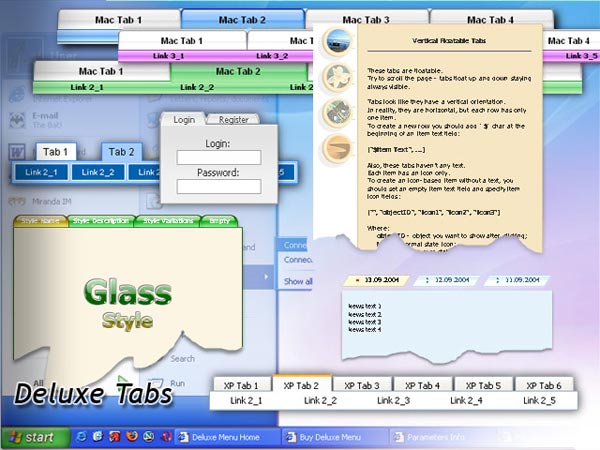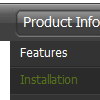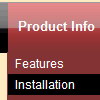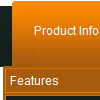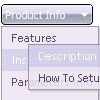Recent Questions
Q: My top levels over the menu have no link and as such I need the cursor not to change when hovering over it – only change over the menus that drop down.
Please let me know how to fix this
A: Unfortunately, you can't change cursor type for different items.
But you can write so:
["< a href='http://deluxe-menu.com/'> Home ["Product Info","", , , , , "0", , , ],
["|What's New","", , , , , "0", , , ],
In all items with links you should use < a> tag.
Set this parameter:
var itemCursor="default";
Q: It's simply not saving the state. Clicking the items on the menu is inconsistent. Sometimes it saves sometimes not.
It seems to be a lot worse in this area.
A: See, Tree Menu saves it's state using cookies.
But it can't re-save the same cookie file from different folders.
For example, if the tree from "website/page.html" saves it's state,the menu from "website/content2/page.html" can't read this state andit creates it's own state. The problem is that it's a standardfeature of browsers and Javascript can't control that.
Q: I'm in search for a product like "Deluxe Menu".
Before buying your software, I'd need to know if I can use images (eg *.jpgs) within rollover drop menu instead of just text; my menu items need to be images. Does "Deluxe Menu" support this?
A: Yes, you can create image-based rollover drop menu.
If item text is empty, icon fields will be used as item images.
For example:
["", "index.html", "itemImageNormal.gif", "itemImageOver.gif", "Home Page"]
Q: If is there any way I can give some space between pressed_item and hover item for the rollover menus
A: You can try to specify spacing parameter:
var itemSpacing=1;
You can also try to use separators.
You should add separator between menu items:
["item","#", "", "", "", "", "", "", "", "", "", ],
["-",],
["item","#", "", "", "", "", "", "", "", "", "", ],
Use "Add Separator button in Deluxe Tuner.
Set separator parameters in the following way:
//--- Separators
var separatorImage="";
var separatorWidth="100%";
var separatorHeight="2px";
var separatorAlignment="left";
var separatorVImage="data.files/separator.jpg";
var separatorVWidth="2px";
var separatorVHeight="100%";
var separatorPadding="0px";

